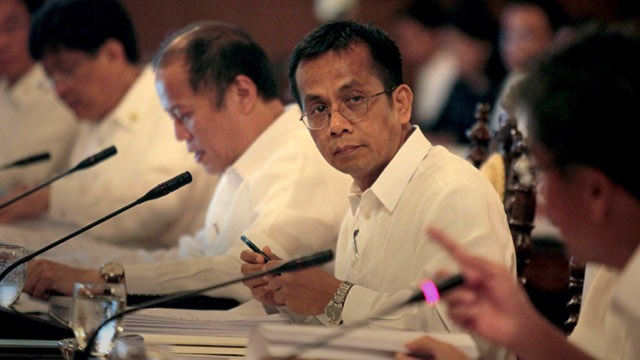SUMMARY
This is AI generated summarization, which may have errors. For context, always refer to the full article.

MANILA, Philippines – Sustained high economic growth and investments in social development programs have reduced poverty incidence in the first half of 2013 – the start of what the National Economic and Development Authority (NEDA) believes may be an “appreciable downward trend” in poverty in the country.
NEDA Director General Arsenio Balisacan said on Tuesday, April 28, that lower poverty incidence in the country is proof that the government’s inclusive growth strategy is working.
Balisacan made the statement after the Philippine Statistics Authority (PSA) report that 24.9% of Filipinos, based on their average income, were considered poor in the first semester of 2013, down from 27.9% in the same period in 2012.
The PSA also said that poverty incidence among Filipino families declined to 19.1% in the first semester of 2013 from 22.3% in the same period in 2012.
“The remarkable improvement in the poverty incidence in the first half of 2013 is evidence that the Philippine’s development strategies are heading in the direction of inclusive growth,” Balisacan said.
“Sustaining rapid economic growth while maintaining a sound macroeconomic environment has proven to be effective in reducing poverty,” he added.
NEDA said that for the first time, official poverty statistics used the income data from the Annual Poverty Indicator Survey (APIS).
Previous estimates were based on the Family Income and Expenditure Survey (FIES), which is conducted every 3 years.
‘Significant findings’
Balisacan also noted that subsistence incidence in the country – the proportion of extremely poor Filipino families or individuals who cannot afford to meet their basic food requirements – declined in the period to 7.7% among Filipino families and 10.7% among Filipinos, based on the PSA report.
He stressed the significance of the finding. “This is the first time that subsistence incidence was reduced to single-digit levels.”
The PSA also reported that per capita family income for the first, second and third deciles posted growth rates of 12.3%, 8.4%, and 8.4%, respectively.
The NEDA chief explained the significance of these findings.
“The faster growth of poor households’ income compared with the slower increase of basic commodity prices implies a robust increase in real incomes of the poor, which played a significant role in reducing poverty during the period,” he said.
Balisacan said government social programs such as the Conditional Cash Transfer (CCT) program help increase the income of qualified poor beneficiaries.
Gov’t measures needed
The Department of Social Welfare and Development, which implements the CCT , adopted a convergence strategy in 2012, where CCT beneficiary-families also benefitted from the agency’s two other major programs – the KALAHI-CIDSS and the Sustainable Livelihood Program.
“These 3 major programs provide support and capacity-building at the levels of both families and communities, and therefore address the major constraints faced by the poor, such as inadequate community infrastructure, lack of finance capital and low quality of human capital,” Balisacan said.
He said maintaining the downward trend in the poverty incidence can be done through programs that would sustain high economic growth.
Such programs, Balisacan said, should also “efficiently implement spatially and sector-focused economic and social programs as laid out in the Philippine Development Plan (PDP) Midterm Update.”
“There is also the urgency of speeding up recovery and reconstruction efforts in disaster-affected areas to ensure that the gains in poverty reduction are sustained,” he said.
Balisacan made the statement a day after Pulse Asia Research Incorporated bared the results of its March 2014 Nationwide Survey on the Performance Ratings of the National Administration on Selected Issues conducted from March 19 to 26, 2014.
The survey results showed the Aquino administration getting the lowest public approval scored on controlling inflation and poverty alleviation. – Rappler.com
Add a comment
How does this make you feel?
There are no comments yet. Add your comment to start the conversation.